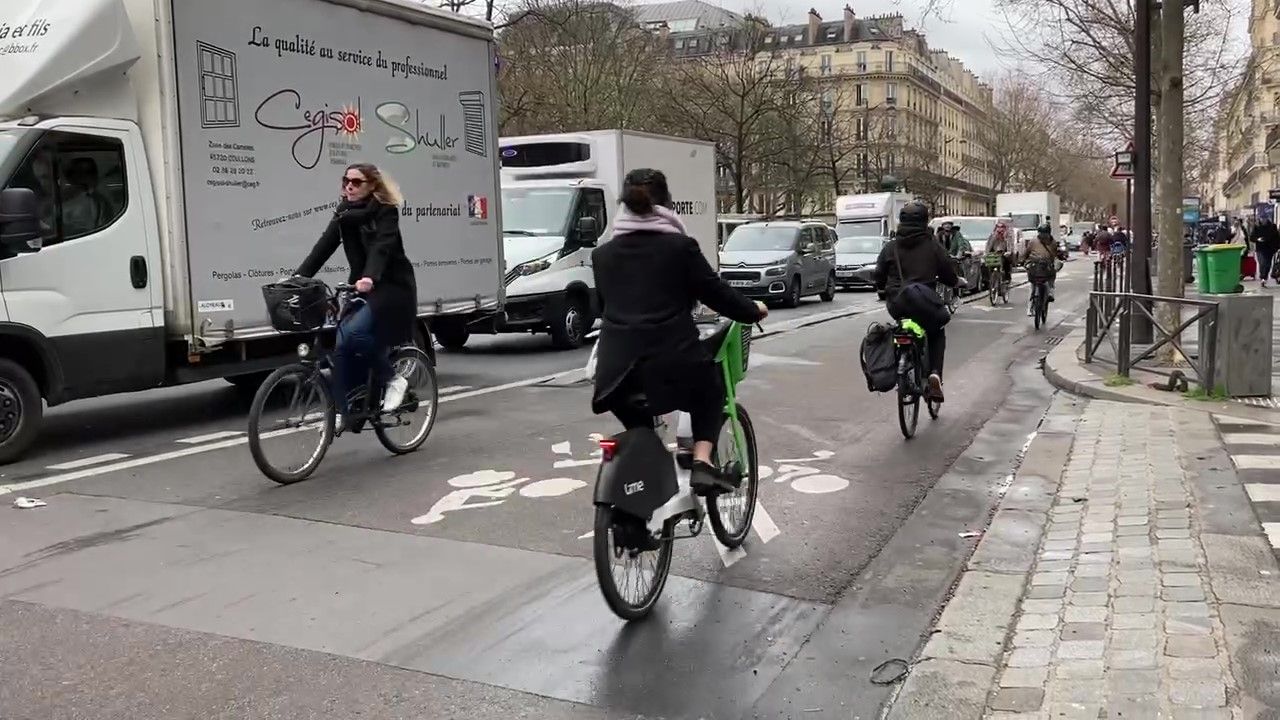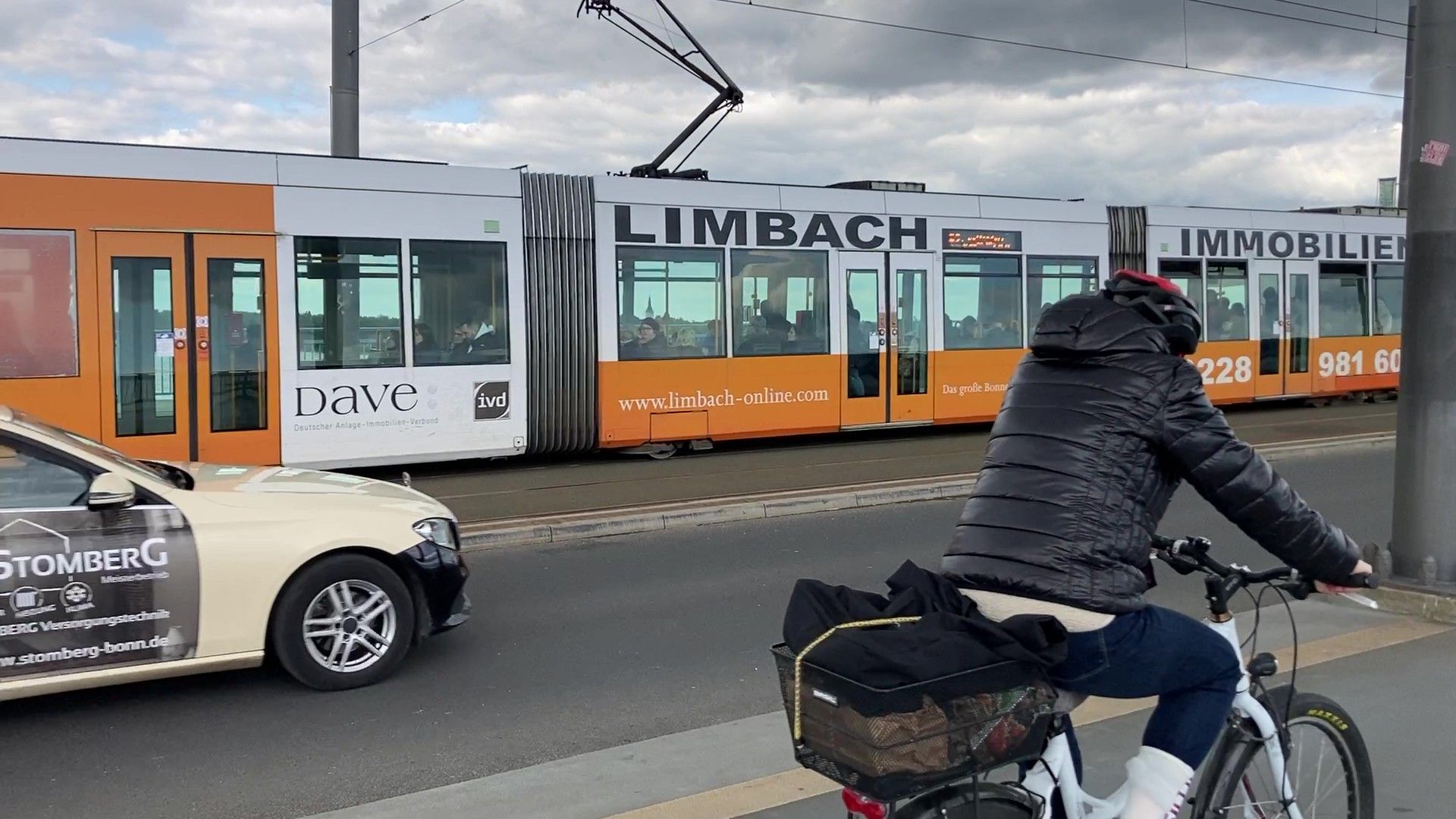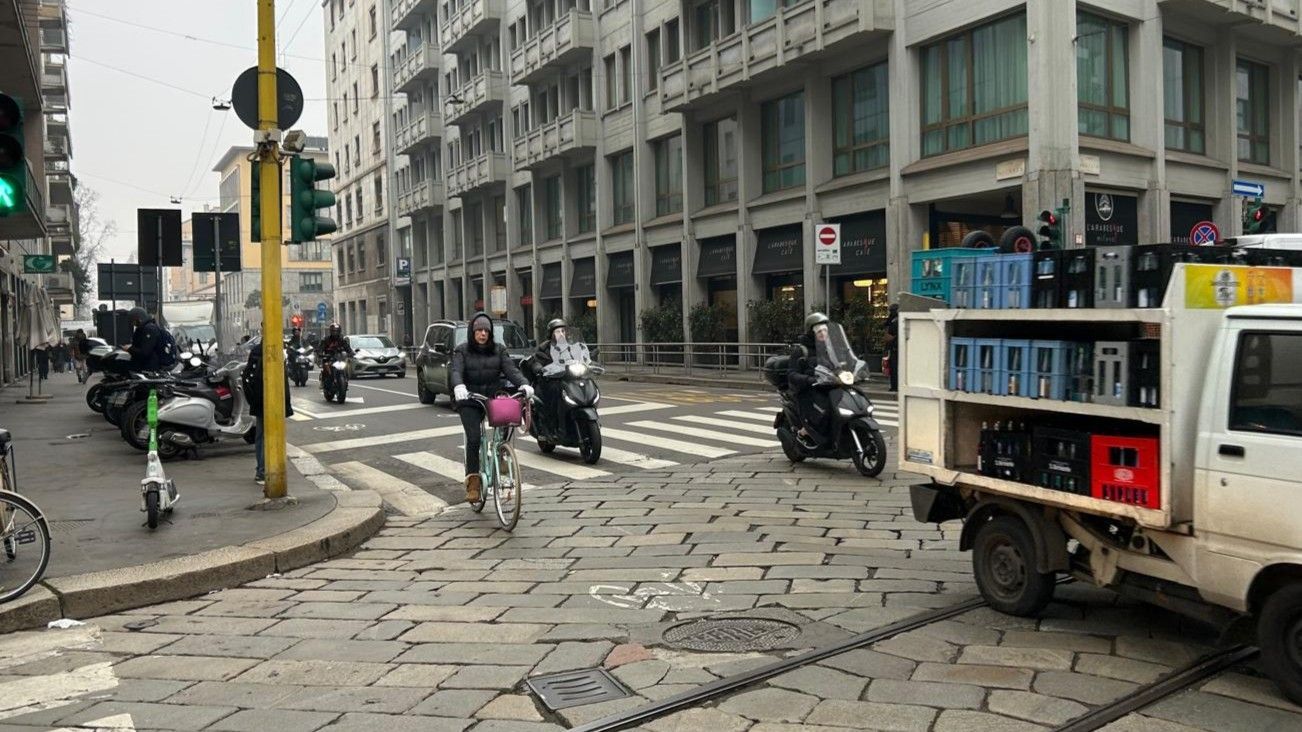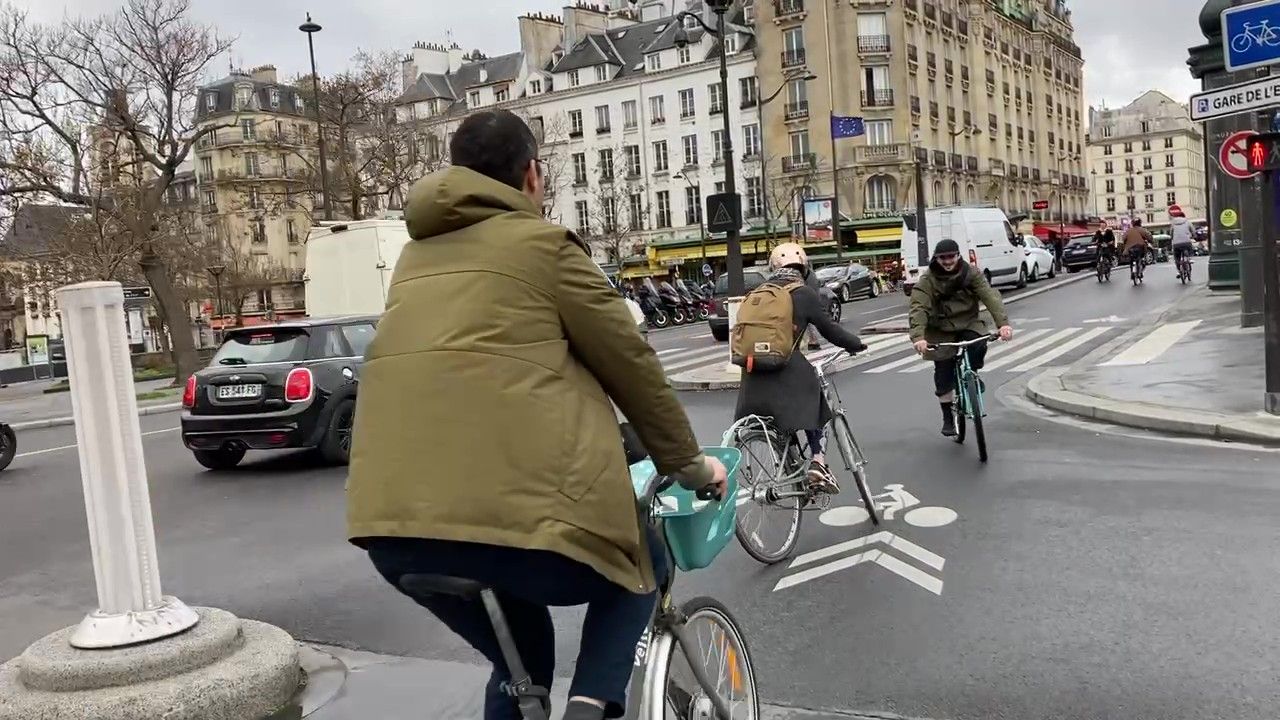Traffic Demand Management (TDM). Insights, Experiences and Strategies
Traffic Demand Management (TDM). Insights, Experiences and Strategies

A corollary of the “good life” is improved transportation. As in all countries worldwide, accessibility and mobility afforded by transportation are driven mainly by the growth in private car ownership. Correspondingly, the share for public transportation has fallen. In industrialized countries, car dependency is so deeply ingrained that, in the U.S. in particular, car ownership rates exceed an average of one car per licensed driver in many urban areas (Stopher 2004).
Two examples of developing countries are: (1) the number of motorcycles and private passenger cars increased at an average rate of 4.5 percent and 10 percent, respectively in Malaysia from 2000 to 2005 (Kasipillai et Chan, 2008); (2) between 1962 and 1973, the average annual growth rate of motorized vehicles in Singapore was 8.8 % (Chew, 2016).
Road traffic congestion is a critical challenge in many major cities across the world. As congestion is the result of an imbalance between “supply” and “demand”. Congestion mitigation solutions can be divided into two categories: supply-side and demand-side strategies. Supply-side strategies include investments in new transportation infrastructure, such as road network extensions to accommodate travel demand. Previous experiences (Broaddus et al., 2009; Asian Development Bank, 2017) suggest that investing in transportation infrastructure to handle the ever-increasing number of private vehicles would not sufficiently alleviate the congestion problem in the long run. As more road space is taken up by private automobiles, the performance of public transportation will suffer, and non-motorized traffic will be forced out (Broaddus et al., 2009).
A shift of paradigm
Demand-side strategies, on the other hand, employ a variety of tools to manage travel demand in accordance with the capacity of available facilities. In other words, travel demand management focuses on maintaining a balance between the supply (capacity) of the transport system and the demand for travel, thus it provides high potential for reducing traffic congestion, improving environmental conditions, and increasing traffic safety for sustainable urban growth. Many successful cities have alleviated traffic congestion by promoting travel demand management, which reduces demand for travel by private vehicles and encourages non-motorized transport or transit use (Suzuki et al., 2013).
Cities in developing countries often face rapid urbanization and motorization process resulting in many negative externalities (Diao, 2019). Given the constrained living space and limited financial resources, it is not feasible to meet the increased demand via purely investment in the transport infrastructure. Developing nations can avoid most of the urban transport problems through better policies and planning practices that use TDM to maintain a balanced and efficient transportation system. Investment in alternative modes of transportation and TDM initiatives is usually significantly more cost-effective than continuing public investments in growing road and parking facilities, therefore TDM should be a vital and strategic solution for cities in developing countries to alleviate traffic congestion (Federal Highway Administration, 2012).
TDM. Some Definitions
Travel demand management (TDM) is defined as strategies to maximize system efficiency of urban transport by discouraging the use of private transport and promoting more effective, healthy and environmentally friendly modes of transport, including public transport and non-motorized transport (NMT) (Broaddus et al., 2009).
TDM regulates travel demand by influencing people’s travel behavior and providing options to reduce the need for travel, or reduce the number of vehicles. TDM has the potential to deliver an array of benefits across a range of economic, environmental and social objectives such as reducing congestion, saving travel costs, reducing accidents and pollution (Federal Highway Administration, 2012).
TDM has evolved as the policy choice for solving transportation and traffic congestion problems by reducing or restricting travel demand, rather than by providing more transportation facilities (Giuliano & Wachs, 1992). It could be defined as any activity, method or program that reduces vehicle trips, resulting in more efficient use of transportation resources (Dorsey, 2005). IEAust defined TDM as “… an intervention (excluding provision of major infrastructure) to modify travel decisions so that more desirable transport, social, economic and/or environmental objectives can be achieved, and the adverse impacts of travel can be reduced” (Barter, Kenworthy & Laube, 2001).
Some lessons and advice to implement a successful TDM plan
Asian Development Bank in 2017 introduced a comprehensive strategy model of TDM that deployed a three-legged approach: improvement of mobility options, implementation of economic incentives, and enforcement of smart growth – land use policy.
Having clear and realistic objectives is the key to policy success, since policies without clear objectives may lose their way in the long run. Other prerequisites to success of demand management policies include political will and support, strong leadership to coordinate efforts from various jurisdictions and organizations, integrated transport strategies, institutional capacity, and public acceptance (Carran-Fletcher et al., 2020).
To create a successful TDM program, proper policies must be designed at all levels, from strategy to implementation, to coordinate efforts from multiple jurisdictions and organizations toward development objectives while allowing for flexible intervention adaptable to local conditions (Carran-Fletcher et al., 2020).
The following lessons can be drawn from reviewing previous works on TDM policies:
a) No single measure can be effective if used in isolation. Combination of the measures can provide the synergetic effect (Carran-Fletcher et al., 2020).
b) The most effective demand-side techniques are financial incentives and disincentives. Financial disincentives, on the other hand, should be used in tandem with financial incentives to promote strict enforcement (Federal Highway Administration, 2004).
c) Demand management policies should be part of a broader package of transportation policies that includes capital investment and institutional strengthening (Federal Highway Administration, 2004).
d) Only those instruments that are likely to be effective in attaining predefined objectives should be examined. The selected instruments should be politically acceptable and implementable at a reasonable cost (UN-HABITAT, 1995).
Classification of strategies and measures
Factors that affect travel demands include demographics, economic activity, the quality and availability of transport options, land use patterns, cost of travel, and demand management strategies (Litman, 2013).
Broaddus et al. (2009) classified TDM strategies into two main groups: incentives (pull options) that improve travel options like public transport and NMT, and disincentives (push options) that make driving less attractive through economic measures such as high taxes and fees, congestion pricing, and parking management.
Carran-Fletcher et al., (2020) classified the TDM strategies into four categories: improved transportation options, financial incentives, land use planning, and outreach and implementation programs.
TDM strategies use various tools (instruments) to derive TDM measures (solutions). There is a broad range of TDM measures, which can be categorized into: (i) measures that improve mobility options (public transport, active transport modes, ride sharing); (ii) economic measures (congestion pricing, tax increases, parking management); and (iii) smart growth and land-use policies (transit-oriented development, urban compact, integrated transportation planning) (Broaddus et al, 2009).
UN-HABITAT (1995) classified the policy mechanisms for TDM into economic, regulatory and physical categories. Economic instruments are essentially market-based interventions that influence the travel behavior using price incentives or disincentives such as fiscal measures (import taxes, fees, etc. on vehicle ownership, fuel taxes, congestion pricing), or the choice of transport mode (parking fees, parking management). Regulatory measures influence the operations of the transport sector using laws and regulations such as area license schemes, parking controls, and public transport promotions. Physical measures include measures that promote development of physical infrastructures for public transport, walking and cycling (Santos et al., 2010) or measures that induce conscious reduction of road capacity in order to reduce traffic volume such as reduced carriageway widths, traffic calming, road humps. Other measures include staggering of work hours, ride sharing/carpooling, intelligent vehicle systems and enhanced ITS.
List of TDM strategies
Changing behavior
TDM strategies include shifting solo drivers to carpools or transit, allowing more employees to work at home, or adjusting work schedules to avoid peak period auto travel (Giuliano & Wachs, 1992).
The core TDM strategies such as carpooling, vanpooling, transit, bicycling, walking, as well as the promotion of tele-working are supported by strategies such as parking management, rideshare matching, marketing and promotions, incentives and subsidies, and other services (Regional Municipality of Peel, 2004).
Support strategies
TDM support strategies include parking management and parking fees, employee transportation coordinators at area employers, rideshare matching, incentives and subsidies, marketing and promotions, guaranteed ride home, intelligent transportation systems, on-site information and amenities, TDM-friendly site design, High Occupancy Vehicle (HOV) lanes, Bus Rapid Transit (BRT)/Transit priority and carpool parking lots (Regional Municipality of Peel, 2004).
Transit
Transit related TDM strategies emphasize increasing transit ridership, improving the efficiency of existing services and identifying potential new services to make publicly provided alternatives to single-occupant vehicle travel, including services and facilities that encourage and support other travel modes. Employer-based TDM strategies include private-sector programs and services that encourage employees to change their commuting practices, incentives that make publicly provided travel modes more attractive, disincentives to solo commuting and employer management policies that offer employees flexibility in travel mode choices. Taxing and pricing related TDM strategies affect the cost of transportation and thereby provide monetary disincentives to some travel behaviors (Mahmood et al., 2009).
Smart growth
TDM strategies include smart growth which influences the timing, location, pattern, intensity and budgeting of urban developments (OKI 2030 Regional Transportation Plan, 2004).
Road Taxes, Car Insurance and Polluter Pays Principle
Transportation as a good is essentially under-priced; 32% of the total costs of automobile use are external costs (e.g., pollution) and are paid not by drivers but by society. 24% constitute internal fixed costs (e.g., depreciation) that are not affected by driving distances (Litman 2007).
A pertinent point to be made in quantifying costs associated with automobile usage is that consumers frequently underestimate the cost of running cars by considering only ownership and operating costs without considering other associated external costs (Gardner and Abraham 2006).
A starting point in the way individual perception of road user charging can be altered prior to the imposition of congestion charging involves road tax and car insurance. Altering the charging of both road tax and car insurance from a fixed yearly cost to a per-journey payment is a way of applying the Polluter Pays Principle (PPP). Important to notice that a flat charge that does not address the issue of distance traveled. In fact, flat charges encourage greater usage as, psychologically, users want to lower the per-unit cost of travel (Kasipillai and Chai, 2008).
Elimination of Fuel Subsidies
It is clear that subsidies should be gradually eliminated, as their associated costs, including regulatory and compliance costs on the part of the government and distortions created in the economy, are disproportionately high compared to the benefits garnered. The fuel subsidy mentality dents competitiveness and encourages a consumption ethic (Oxford Business Group, 2006). Fuel taxes encourage a conservation ethic, leading to prudent energy management, greater economic efficiency, and lower pollution emissions (Litman, 2007).
Road pricing
Road pricing means that motorists pay directly for the privilege of driving on a particular road or in a particular area (Victoria Transport Policy Institute, 2007). Congestion pricing is a particular type of road pricing where variable fees are charged with an explicit purpose to reduce congestion (Litman 2007a). One policy direction that should be seriously contemplated by the government includes road pricing on a national basis as a way for charging for external costs such as congestion, accidents, and environmental impacts. It is generally accepted that, in line with Pigouvian principles, road pricing should be based on marginal costing principles (Nash, 2007).
Asian Development Bank. (2017). Travel demand management options in Beijing. pp 68.
Barter, P., Kenworthy, J., & Laube. (2001). Lessons from Asia on sustainable urban transport. In N. Low & B.
Gleeson (Eds.), Earth on the Move. London, UK: Palgrave.
Broaddus, A., Litman, T., & Menon G. (2009). Transportation demand management – training document. GTZ, Transport Policy Advisory Services.
Carran-Fletcher, A., Joseph, C., & Thomas, F. (2020). Travel demand management: strategies and outcomes. NZ Transport Agency Research Report 661.
Chew, N. (2016). Walkable and Bikeable Cities: Lessons from Seoul and Singapore. Centre for Liveable Cities Singapore.
Diao, M. (2019). Towards sustainable urban transport in Singapore: Policies and mobility trends. Transp. Policy, 81, 320–330. https://doi.org/10.1016/j.tranpol.2018.05.005.
Dorsey, B. (2005). Mass transit trends and the role of unlimited access in transportation demand management. Journal of Transport Geography, 13, 235-246.
Federal Highway Administration. (2004). Mitigating traffic congestion - the role of demand-side strategies.
Federal Highway Administration. (2012). Integrating demand management into the transportation planning process. Repot No. FHWA-HOP-12-035.
Gardner, B., & Abraham, C. (2006). What drives car use? A grounded theory analysis of commuters’ reasons for driving. Transportation Research Part F, 10(2007), 87-200.
Giuliano, G., & Wachs, M. (1992). Transportation Demand Management as Part of Growth Management. In J. M. Stein (Ed.), Growth Management: The Planning Challenge Of The 1990s. London: Sage Publications.
Kasipillai, J., & Chan, P. (2008). Travel demand management: lessons for Malaysia. Journal of Public Transportation, 11(3), 41-55.
Litman, T.A. (2007). Win-win transportation solutions: Mobility management strategies that provide economic, social and environmental benefits. Victoria Transport Policy Institute.
Litman, T.A. (2007a). Evaluating rail transit benefits: A comment. Transport Policy, 14, 94-97.
Litman, T.A. (2013). Understanding transport demands and elasticities: how prices and other factors affect travel behavior. Victoria Transp. Policy Inst. 1–76.
Mahmood, M., Bashar, M. A., & Akhter, S. (2009). Traffic management system and travel demand management (tdm) strategies: suggestions for urban cities in Bangladesh. Asian Journal of Management and Humanity Sciences, 4(2-3), 161-178.
McKinsey Report. (2020). Comprehensive assessment of public perception on transport systems of 24 cities world-wide.
Nash, C. (2007). Road pricing in Britain. Journal of Transport Economics and Policy, 41(1), 135-147.
Oxford Business Group. (2006). Emerging Malaysia 2006. Oxford Business Group.
OKI 2030 Regional Transportation Plan. (2004). Regional Transportation Plan. Ohio: USA.
Regional Municipality of Peel. (2004). Transportation Demand Management Study. Report No. 1235, Canada.
Santos, G., Behrendt, H., & Teytelboym, A. (2010). Part II: Policies for sustainable road transport. Res. Transp. Econ., 28, 46–91.
Stopher, P.R. (2004). Reducing road congestion: a reality check. Transport Policy, 11, pp.117-131.
Suzuki, H., Cervero, R., & Iuchi, K. (2013). Transforming cities with transit. transit and land use integration for sustainable urban development. 10.1596/978-0-8213-9745-9.
UN-Habitat. (1995). Economic instruments and regulatory measures for demand management of urban transport.
Victoria Transport Policy Institute. (2007). Road pricing: Congestion pricing, value pricing, toll roads and HOT lanes. Online TDM Encyclopedia.






